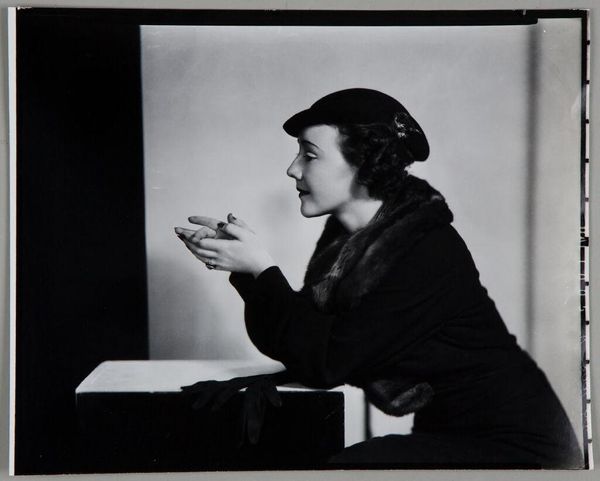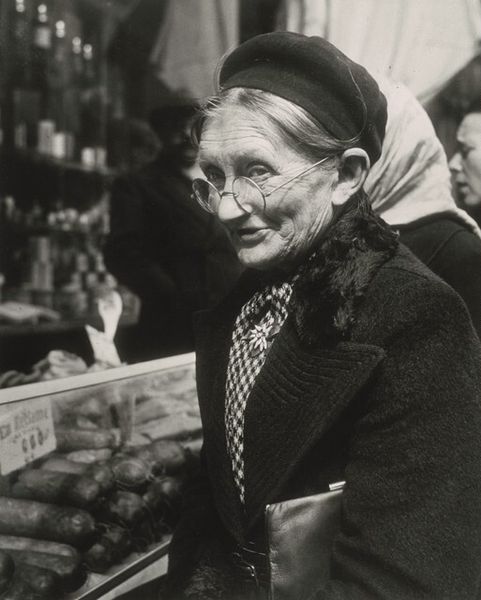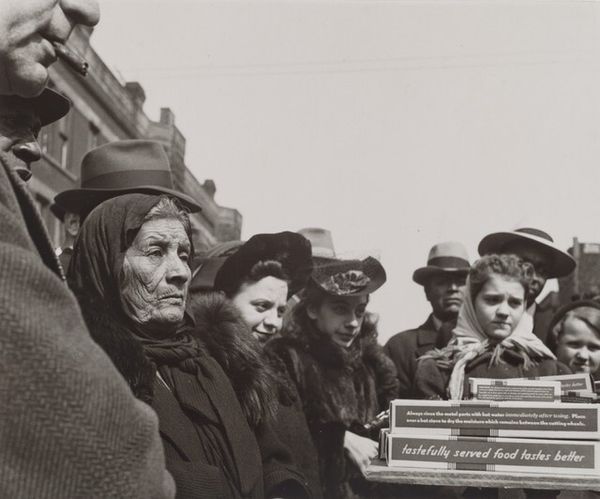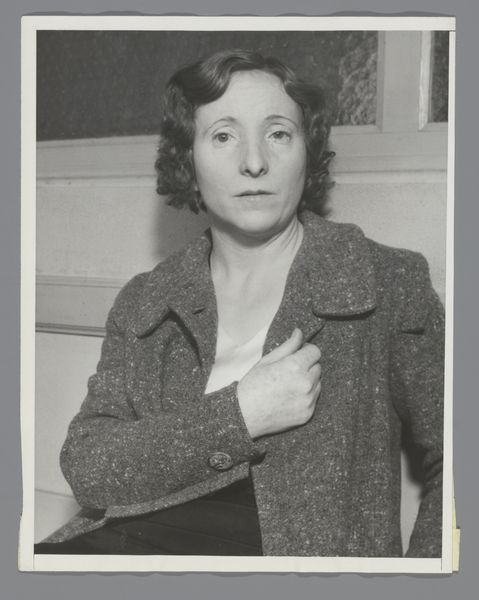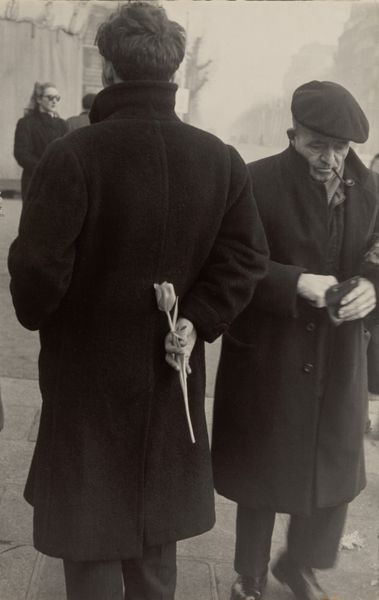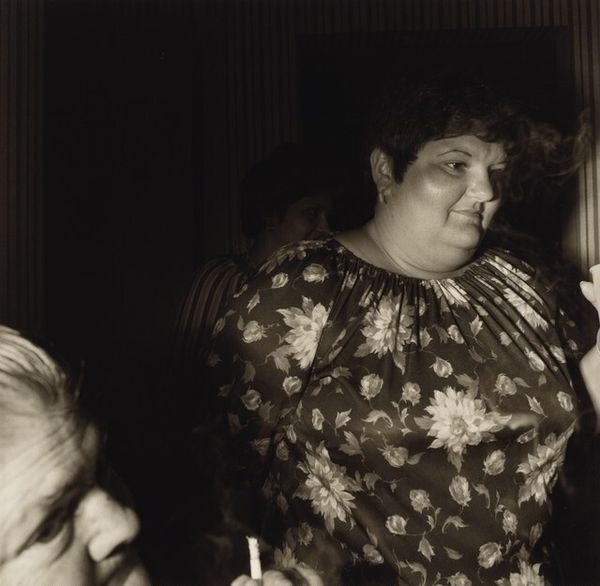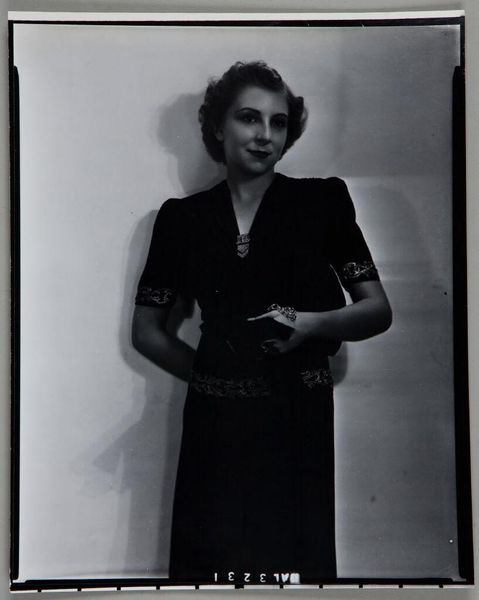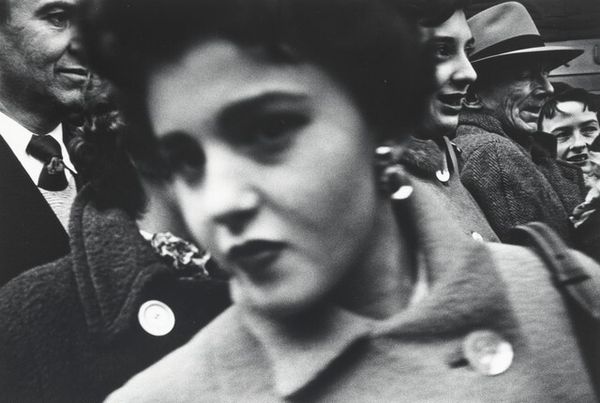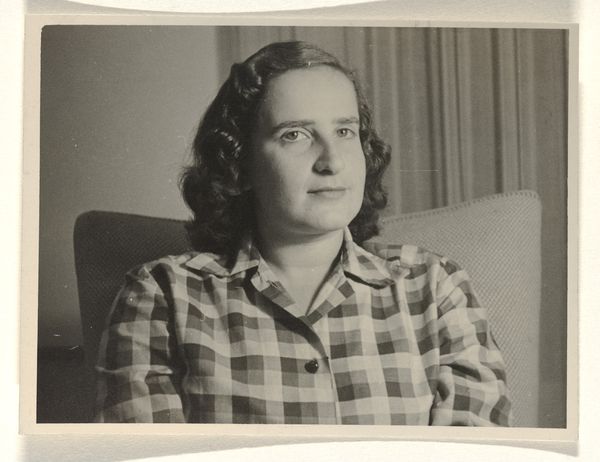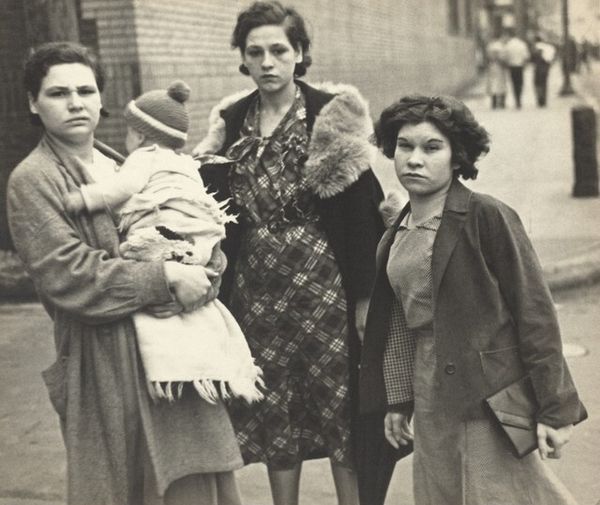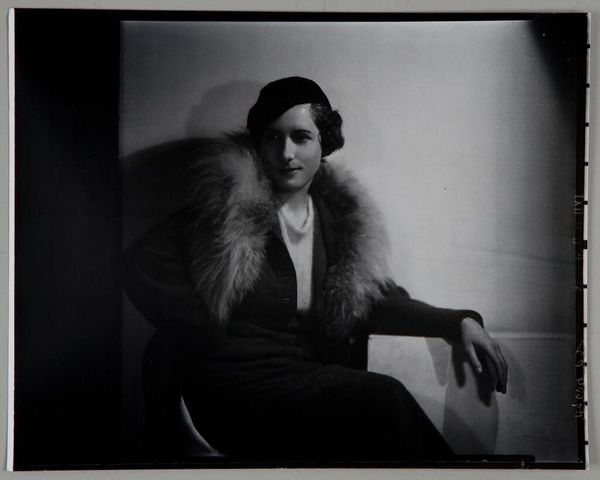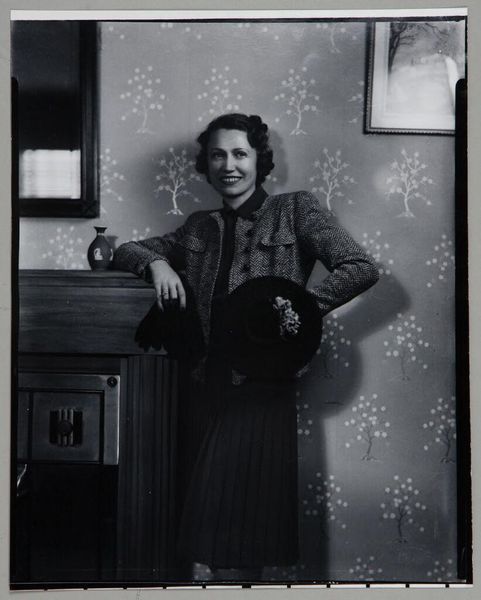
Dimensions: image: 24 × 19 cm (9 7/16 × 7 1/2 in.) sheet: 25.4 × 20.32 cm (10 × 8 in.)
Copyright: National Gallery of Art: CC0 1.0
Editor: This gelatin-silver print, "May Day, San Francisco, California" by Dorothea Lange, made sometime between 1934 and 1969, is so striking. The woman's upward gaze immediately grabs your attention. What stands out to you as you view it? Curator: The most potent symbol is, of course, "May Day" emblazoned on the newspaper she holds. May Day, historically a celebration of the returning spring, became an international workers' holiday, a commemoration of the Haymarket affair. Her gaze skyward connects with that sense of hope, of looking toward a brighter future, but there is tension in the history of that day. Do you sense that tension in her face, or is it hopeful resolution? Editor: I see both, actually. There's a seriousness, perhaps even weariness, around her eyes, but also a kind of quiet determination in the set of her jaw. So the newspaper, beyond its literal meaning, represents this complex historical and cultural context? Curator: Precisely. And consider Lange’s larger body of work. Known for documenting the Great Depression, her lens captured the human toll of economic hardship. How might knowing that influence your reading of this particular photograph? Editor: It definitely adds another layer. Knowing the context of the Depression, the newspaper and her upward gaze speak to me of resilience, of holding onto hope amid hardship. Curator: The image, then, becomes a record of a specific time while simultaneously speaking to broader, more enduring themes of social justice and the human spirit. I wonder, what will viewers a century from now find most striking? Editor: I think it's that universal quality that will continue to resonate – the look of hope mixed with worry – it's very human. Thanks for sharing your insights!
Comments
No comments
Be the first to comment and join the conversation on the ultimate creative platform.

